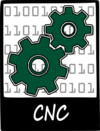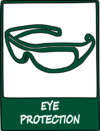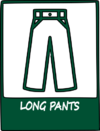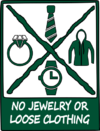Tormach CNC Milling Machine: Difference between revisions
Jump to navigation
Jump to search
No edit summary |
No edit summary |
||
| Line 42: | Line 42: | ||
#If there is an end mill currently loaded into the mill, pivot the black clasp over the spindle cylinder (may need to rotate cylinder so that the two flat sides match the flat sides of the clasp). (Gif needed) | #If there is an end mill currently loaded into the mill, pivot the black clasp over the spindle cylinder (may need to rotate cylinder so that the two flat sides match the flat sides of the clasp). (Gif needed) | ||
#Take the gold tipped hammer and fit it over the spindle. Grab hold of the end mill below to stabillize it, and rotate the hammer and spindle counter clockwise. Once the spindle is loose, tap the top of the spindle and the end mill should come free. | #Take the gold tipped hammer and fit it over the spindle. Grab hold of the end mill below to stabillize it, and rotate the hammer and spindle counter clockwise. Once the spindle is loose, tap the top of the spindle and the end mill should come free. | ||
#Return the end mill to its appropriate holder and grab the | #Return the end mill to its appropriate holder and grab the Heimer probe from its holder. | ||
#Insert the Heimer probe into the spindle spot, attach the spindle hammer, and rotate clockwise until tight. Flip up the black clasp and shut the spindle door (door won't shut unless the clasp has been lifted). | #Insert the Heimer probe into the spindle spot, attach the spindle hammer, and rotate clockwise until tight. Flip up the black clasp and shut the spindle door (door won't shut unless the clasp has been lifted). | ||
Referencing your stock. | Referencing your stock. | ||
#You can drive the mill by manipulating the joystick to the left of the keyboard. When you click on the axis that you wish to move, you will see a green circle appear on the computer monitor next to that axis. The joystick has various speed levels so the more you rotate the wheel, the faster the bases will move. Notice that the mill is stationary in x and y while the base is what moves around. | #You can drive the mill by manipulating the joystick to the left of the keyboard. When you click on the axis that you wish to move, you will see a green circle appear on the computer monitor next to that axis. The joystick has various speed levels so the more you rotate the wheel, the faster the bases will move. Notice that the mill is stationary in x and y while the base is what moves around. | ||
#Experiment with moving the mill at a safe height above the workpiece. Move slowly and cautiously as a crash may break the | #Experiment with moving the mill at a safe height above the workpiece. Move slowly and cautiously as a crash may break the Heimer probe. | ||
#Notice that the mill will stop you from moving too far in a coordinate direction. These are called limit switches. | #Notice that the mill will stop you from moving too far in a coordinate direction. These are called limit switches. | ||
#The Heimer Probe works by displaying the pressure felt by its spherical tip. In order to reference the machine, the idea is to carefully move the probe's tip against a surface, and move it incrementally until the longer tip on the pressure gauge has completed two full rotations. At this point, the shorter tip will be pointed at 6:00, towards zero. | |||
#In order to find the direct x-y center of the workpiece, a useful technique is to find the distance between each set of sides, and divide that number by two. | |||
#Start by bringing the heimer probe to the left side of the 2x4. Make sure it is to the side of the workpiece and lower the z axis until the full surface of the sphere is underneath the top plane of the workpiece. Slowly move the probe into the 2x4, watching as the longer tip of the pressure gauge rotates around the circle. When it gets close to having made full rotations, put your finger in the dimple on top of the joystick and move the probe in .0001" increments until the pressure gauge is exactly zero. | |||
#On the display screen, highlight the current value of your X-coordinate, type in "0", and press "enter" on the keyboard. | |||
Revision as of 17:32, 8 August 2017
| Required Badge | Required PPE | ||||
|---|---|---|---|---|---|
 |
 |
 |
 |
 |

|
Job Hazard Analysis (JHA) documents, Personal Protective Equipment (PPE) information, and Operator's Manuals can be found in the Safety and Manuals section.
This machine is covered under the CNC training. Users who have not completed this training cannot use this machine.
CNC:
- When facing with a superfly on aluminum, use 1500 RPM, 9% velocity slider (~10 ipm)
- When performing cuts on a thin sheet of aluminum, stabilize it on either side with 1-2-3 blocks. Also, to reduce chatter, face with an 1/2" endmill using 1500 RPM and 9% velocity slider (~10 ipm)
- When cutting a thin plate of aluminum stock, tools like the 1/2" and the shear hog will induce too much pressure and cause chatter. This can be prevented by performing your adaptive and contour operations with a small bit such as a 3/16".
- Always reference Z first
- Max grip on the vice is 5.3"
- If the safety enclosure is not properly closed, the spindle velocity will drop to 1000 RPM provided the machine is running.
- Because of the tram on the mill, the superfly will face better when cutting from right to left.
CNC 101:
Turning on the mill
- Open the mill enclosure door and turn on the power by rotating the red switch in the mill enclosure 90 degrees clockwise.
- Once the computer monitor has booted up, release the E-stop by rotating the red button (just to the right of the mill's doors) clockwise about 90 degrees. Then, press the green button to the right of the E-stop.
- On the computer monitor, click the flashing red "reset" button
- Click the "REF Z" button. This will bring the Z-axis to its home. Always reference the Z axis first as there will never be any obstructions to mill in the positive Z direction.
- Once the green LED next to REF Z is visible, click "REF X" and then "REF Y".
- Verify that there are green circles above each of the REF buttons before continuing.
- Include note about disabling reference switches
Setting up your stock.
- Grab a piece of the 6" long 2x4 wood stock
- Open the mill's enclosure doors and widen the vice by rotating the vice's lead screw counter clockwise
- Wipe the holding portion of the vice clean with a rag
- Place two parallels into the vice so that they're snug to each side. Use thick ones, as the corners of the 2x4 are probably rounded.
- Place the 2x4 on top of the parallels, ensuring that one of the parallels protrudes 1/4" outside of the 2x4. Tighten the vice with the lever and tap the 2x4 with a mallet to ensure it's resting completely on the parallels. It's better to overtighten so the 2x4 won't come loose.
Changing end mills.
- Open the spindle access by undoing the clasp to the chamber above the mill's spindle. Swing the door fully open (pic)
- If there is an end mill currently loaded into the mill, pivot the black clasp over the spindle cylinder (may need to rotate cylinder so that the two flat sides match the flat sides of the clasp). (Gif needed)
- Take the gold tipped hammer and fit it over the spindle. Grab hold of the end mill below to stabillize it, and rotate the hammer and spindle counter clockwise. Once the spindle is loose, tap the top of the spindle and the end mill should come free.
- Return the end mill to its appropriate holder and grab the Heimer probe from its holder.
- Insert the Heimer probe into the spindle spot, attach the spindle hammer, and rotate clockwise until tight. Flip up the black clasp and shut the spindle door (door won't shut unless the clasp has been lifted).
Referencing your stock.
- You can drive the mill by manipulating the joystick to the left of the keyboard. When you click on the axis that you wish to move, you will see a green circle appear on the computer monitor next to that axis. The joystick has various speed levels so the more you rotate the wheel, the faster the bases will move. Notice that the mill is stationary in x and y while the base is what moves around.
- Experiment with moving the mill at a safe height above the workpiece. Move slowly and cautiously as a crash may break the Heimer probe.
- Notice that the mill will stop you from moving too far in a coordinate direction. These are called limit switches.
- The Heimer Probe works by displaying the pressure felt by its spherical tip. In order to reference the machine, the idea is to carefully move the probe's tip against a surface, and move it incrementally until the longer tip on the pressure gauge has completed two full rotations. At this point, the shorter tip will be pointed at 6:00, towards zero.
- In order to find the direct x-y center of the workpiece, a useful technique is to find the distance between each set of sides, and divide that number by two.
- Start by bringing the heimer probe to the left side of the 2x4. Make sure it is to the side of the workpiece and lower the z axis until the full surface of the sphere is underneath the top plane of the workpiece. Slowly move the probe into the 2x4, watching as the longer tip of the pressure gauge rotates around the circle. When it gets close to having made full rotations, put your finger in the dimple on top of the joystick and move the probe in .0001" increments until the pressure gauge is exactly zero.
- On the display screen, highlight the current value of your X-coordinate, type in "0", and press "enter" on the keyboard.